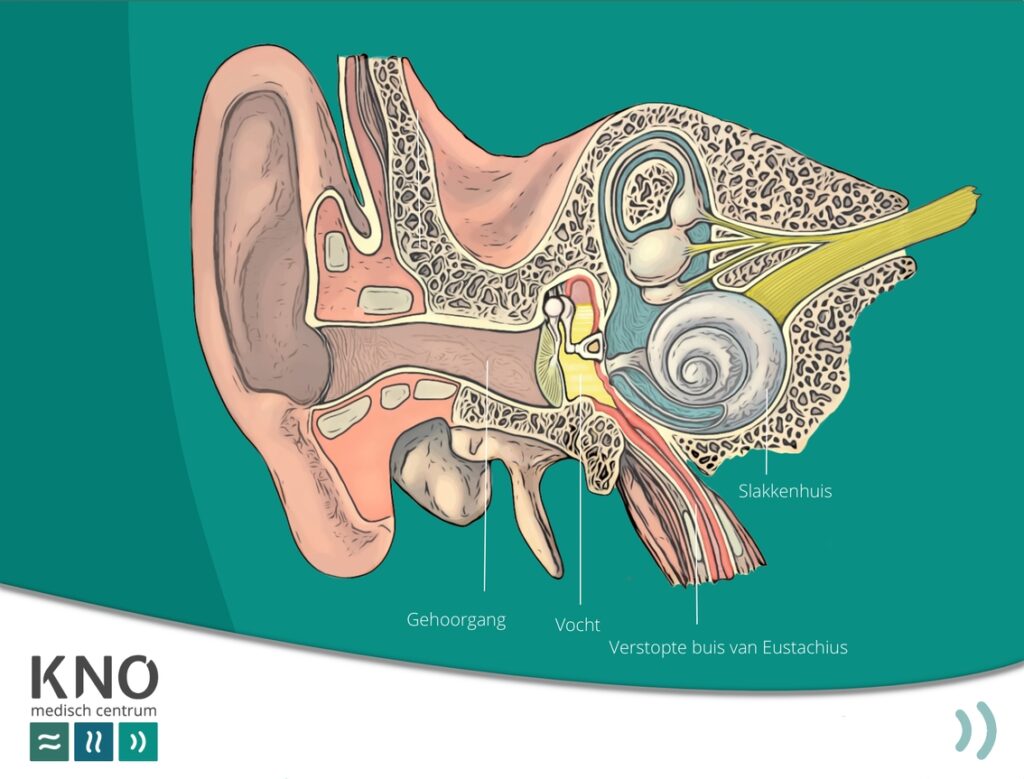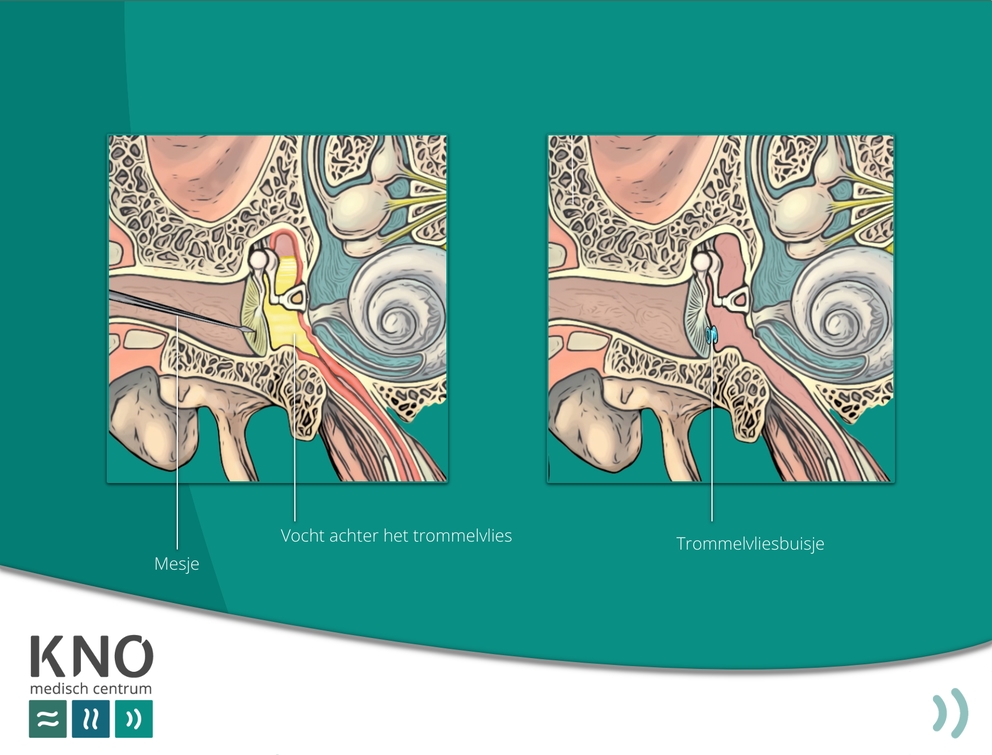what is fluid behind the eardrum?
explanation
Fluid behind the eardrum is also known as otitis media with effusion. Otitis media with effusion is caused by an insufficient function of the Eustachian tube (the connection between nose and ear) which prevents the fluid from being drained. There is a close connection between colds and the occurrence of otitis media with effusion.
Fluid behind the eardrum in children
Otitis media with effusion is also very common in children. The Eustachian tube does not function very well in children. In addition, children are more likely to have colds, making the Eustachian tube more easily clogged. For more information, see (hearing loss in children).

What symptoms are associated with fluid behind the eardrum?
symptoms
If fluid builds up behind the eardrum, you will notice that hearing in that ear is much worse. Occasionally someone can experience balance problems or dizziness. Apart from the hearing loss, there are no other complaints.
How is fluid behind the eardrum discovered?
You can contact KNO Medisch Centrum to investigate the cause of the hearing loss. The ENT doctor can easily determine whether there is fluid accumulated behind the eardrum or whether the eardrum is functioning properly.
When in doubt, a hearing test or pressure measurement of the middle ear can be done to determine the nature and extent of hearing loss.
what causes fluid behind the eardrum?
cause
Fluid in the middle ear (otitis media with effusion) is caused by insufficient functioning of the Eustachian tube (the connection between nose and ear) causing negative pressure in the middle ear. Due to the negative pressure, the mucous membrane in the middle ear can become irritated and secrete fluid, so that the middle ear becomes filled with fluid instead of air. There is a close relationship between a cold and the formation of fluid in the middle ear. Sometimes an enlarged adenoid or tumor at the site of the Eustachian tube can cause the fluid behind the eardrum.
WHAT OTHER CONDITIONS CAN CAUSE SIMILAR COMPLAINTS?
Sudden deafness
This type of hearing impairment is often mistaken for possible fluid accumulation behind the eardrum. However, it is very important to detect a sudden deafness within two weeks, because a treatment can still be started in this phase.
What to do against fluid in the middle ear?
solution
- Try to equalize regularly.
- Rinse or spray the nose with physiological saline during a cold.
- Use xylometazoline nasal spray for a week.
- Try to steam occasionally.
Which medicine for fluid behind the eardrum?
medicine
You can drip your nose with a physiological saline solution. You can also use nasal drops containing xylometazoline for a short period of time or an anti-inflammatory nasal spray for a longer period of time. The use of a nasal spray creates more space in the nose, so that the moisture is sometimes more easily removed through the Eustachian tube.
Which possible treatments for fluid behind the eardrum?
treatments
Ear tube (grommet)
In case of insufficient effect of medicines, the ENT doctor can suggest to insert an ear tube. This is placed in the eardrum and aims to make an open connection between the middle ear and the external auditory canal. Hence air enters the middle ear through the tube. In fact, the tube replaces the Eustachian tube. In children, an ear tube is placed under general anesthesia. In adults, a tube is placed in the outpatient clinic.

When to contact us?
contact
If you suffer from deafness in one or both ears that has developed quite acutely, it is wise having an ENT specialist find out what the cause of the hearing impairment is. If your GP has already determined the fluid behind the eardrum, but the complaints do not improve, a consultation with an ENT specialist is recommended.
If your child has a hearing loss, a delay in speech development, problems at school or behavioral changes, it can still be wise to have this investigated. You can easily make an appointment for this at KNO Medisch Centrum.
More information
Click on the links below for more information
Information from the Dutch Association for ENT Surgery.
Guidelines
This patient information has been compiled with the utmost care. It concerns general information. This information is not legally binding. © KNO Medisch Centrum / knomc.addsoul.nl
